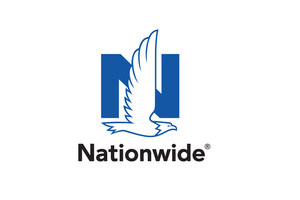COLUMBUS, Ohio, June 16, 2020 /PRNewswire/ -- Data from the latest Health of Housing Markets Report (HoHM Report) from Nationwide economics finds that housing sustainability in the U.S. has fallen to levels not seen since the depths of the Great Recession.
Across the United States, the dramatic worsening of the labor market due to COVID-19 caused the national Leading Index of Healthy Housing Markets (LIHHM) to fall sharply in the second quarter to 100.3, down by almost six points from the first quarter. This puts the LIHHM only into neutral territory, however, indicating modest concerns about housing sustainability for the national housing market into the first half of 2021. Despite the hit to housing coming from the drop in the job market in the first half of 2020, low mortgage rates and continued solid household formations should lead to a quicker improvement during the expected economic rebound.
The HoHM report is a quarterly measure of the health of the U.S. housing market using the LIHHM, a proprietary, data-driven view of the near-term performance of housing markets for the nation as a whole and for 400 metropolitan statistical areas (MSAs) and divisions. For each MSA, the LIHHM uses local-level data to incorporate the unique characteristics of regional housing markets. The focus of the LIHHM is on the entire housing market's health, rather than a projection of house prices or home sales.
More concern about local markets
In a sharp turn from the first quarter, the HoHM report finds only 44 of 400 MSAs are rated positively, down from 233 in the first quarter. Meanwhile, 219 of 400 housing markets in the U.S. are now in neutral territory, while 137 markets have a negative ranking, the highest number of negative rankings since the third quarter of 2010. Fortunately, 120 of these markets are negative by only one ranking (out of a possible four), indicating a slightly elevated concern about housing health in those markets. The remaining 17 negative markets have a minus two ranking, indicating a modest downturn in the housing market is likely in the near term.
"The breakdown of rankings for metropolitan areas is the weakest it's been since 2010, with only about 10 percent of markets now rated positively," said David W. Berson, Nationwide senior vice president and chief economist. "A quarter of all housing markets are now negative, and half are in neutral territory, showing just how widespread the impact of COVID-19 has been within local markets across the U.S."
Mandated stay-at-home orders to flatten the infection curve of COVID-19 shut down housing markets across most of the country during the typically busy spring buying season. Existing home sales plunged by 17.8 percent for April and home builders substantially cut housing starts in anticipation of reduced homebuyer demand.
Looking forward, Nationwide economics projects a 13 percent decline for total home sales in 2020, which will be the largest drop in year-over-year sales since 2008. Despite the overall decline, signs of recovery have appeared in the second quarter.
"New home sales unexpectedly increased for April, suggesting some consumers continued to shop while on lockdown," Berson said. "Record-low mortgage rates have also helped to buoy the housing market, and mortgage applications for purchase have surged since bottoming out in early April."
While the housing recovery after the Great Recession was sluggish for a number of years, the HoHM report projects a much faster housing market recovery. If antivirals/therapeutics become widely available with an eventual vaccine by early next year, it is expected that the economy will expand sharply in 2021 and into 2022. If that happens, the report predicts total home sales for 2021 will rise to levels nearly on par with 2019, with house shopping behavior further boosted by low mortgage rates.
Looking at the second quarter, metropolitan areas with the highest LIHHM rankings are, in order: Waterloo-Cedar Falls, Iowa; Gettysburg, Penn.; Lancaster, Penn.; Camden, N.J.; Detroit-Dearborn-Livonia, Mich.; Abilene, Texas; Des Moines-West Des Moines, Iowa; New Bern, N.C.; Danville, Ill.; and, Tallahassee, Fla.
By contrast, metro markets that have the least positive LIHHM outlooks are: San Angelo, Texas; Kennewick-Richland, Wash.; Cheyenne, Wyo.; Odessa, Texas; Waco, Texas; Yakima, Wash.; Decatur, Ala.; Kokomo, Ind.; Longview, Texas; and, Clarksville, Tenn.-Ky.
More information about the HoHM Report, including the methodology used, can be found at blog.nationwide.com/housing. The HoHM Report is released on a quarterly basis online and in print.
About Nationwide
Nationwide, a Fortune 100 company based in Columbus, Ohio, is one of the largest and strongest diversified insurance and financial services organizations in the United States. Nationwide is rated A+ by both A.M. Best and Standard & Poor's. An industry leader in driving customer-focused innovation, Nationwide provides a full range of insurance and financial services products including auto, business, homeowners, farm and life insurance; public and private sector retirement plans, annuities and mutual funds; excess & surplus, specialty and surety; pet, motorcycle and boat insurance. For more information, visit www.nationwide.com. Follow us on Facebook and Twitter.
Nationwide, Nationwide is on your side and the Nationwide N and Eagle are service marks of Nationwide Mutual Insurance Company. © 2020
NFM-19737AO
Contact:
Kevin Kemper
(614) 249-6349
[email protected]
SOURCE Nationwide

Related Links
WANT YOUR COMPANY'S NEWS FEATURED ON PRNEWSWIRE.COM?
Newsrooms &
Influencers
Digital Media
Outlets
Journalists
Opted In





Share this article